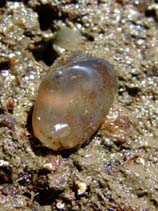Corella eumyota Traustedt, 1882
Sea clogWarning: DOMDocument::load(): SSL operation failed with code 1. OpenSSL Error messages: error:140770FC:SSL routines:SSL23_GET_SERVER_HELLO:unknown protocol in C:\Apache24\htdocs\includes\SpeciesSummary.lib.php on line 1236
Warning: DOMDocument::load(): Failed to enable crypto in C:\Apache24\htdocs\includes\SpeciesSummary.lib.php on line 1236
Warning: DOMDocument::load(https://sealifebase.nrm.se/webservice/AquaMaps/getAMap.php?genus=Corella&species=eumyota): failed to open stream: operation failed in C:\Apache24\htdocs\includes\SpeciesSummary.lib.php on line 1236
Warning: DOMDocument::load(): I/O warning : failed to load external entity "https://sealifebase.nrm.se/webservice/AquaMaps/getAMap.php?genus=Corella&species=eumyota" in C:\Apache24\htdocs\includes\SpeciesSummary.lib.php on line 1236
Classification / Names Common names | Synonyms | CoL | ITIS | WoRMS
| Phlebobranchia | Corellidae
Environment: milieu / climate zone / depth range / distribution range Ökologie
; tiefenbereich 0 - 1376 m (Ref. 1662). Subtropical
Verbreitung Länder | FAO Gebiete | Ecosystems | Vorkommen | Einführungen
Atlantic Ocean, Indo-Pacific, Antarctic and the Mediterranean. Tropical to polar.
Length at first maturity / Size / Gewicht / Alter
Maturity: Lm ? range ? - ? cm Max length : 24.0 cm TL Männchen/unbestimmt; (Ref. 1753)
Minimum depth from Ref. 3435. Lives on hard (Ref. 1744) and soft substrate (Ref. 1753), like rock, sand, mud, under rocks, and is epibiotic on other ascidians, macroalgae, or mussels (Ref. 87801) on port or harbour structures like pilings or hulls of ships (Ref. 87801, 1134), at depths of 20 to 30 m, and on moraine deposits (Ref. 1753).
Life cycle and mating behavior Geschlechtsreife | Fortpflanzung | Ablaichen | Eier | Fecundity | Larven
Members of the class Ascidiacea are hermaphroditic; both cross- and self-fertilization is typical. Life cycle: Eggs develop into lecithotrophic larva before metamorphosing into benthic adults.
Hauptreferenz
Referenzen | Koordinator | Partner
Sanamyan, K.E. and N.P. Sanamyan. 1999. (Ref. 1662)
IUCN Rote Liste Status (Ref. 130435)
CITES Status (Ref. 108899)
Not Evaluated
CMS (Ref. 116361)
Not Evaluated
Bedrohung für Menschen
Nutzung durch Menschen
| FishSource |
Tools
Mehr Information
Alter/Größe
Wachstum
Länge-Gewicht
Länge-Länge
Morphologie
Larven
Dichte
Wachstum
Länge-Gewicht
Länge-Länge
Morphologie
Larven
Dichte
Internet Quellen
BHL | BOLD Systems | CISTI | DiscoverLife | FAO(Publication : search) | Fishipedia | GenBank (Genom, nucleotide) | GloBI | Gomexsi | Google Books | Google Scholar | Google | PubMed | Tree of Life | Wikipedia (Gehe zu, Suchen) | Zoological Record
Estimates based on models
Preferred temperature
(Ref. 115969): 0.2 - 9.6, mean 2.4 (based on 1969 cells).
Preiskategorie
(Ref. 80766):
Unknown.



